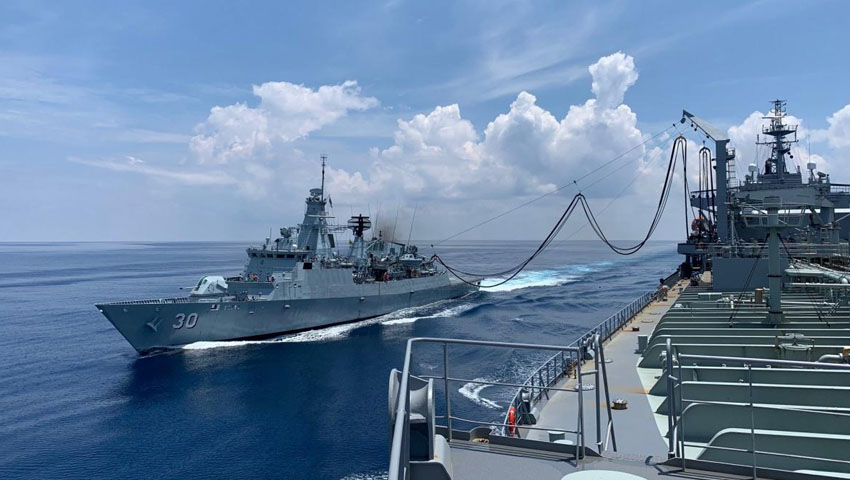The Royal Australian Navy is stepping up its participation in the government’s Pacific step-up program, with ships supporting the East Asia Deployment successfully participating in a number of international engagements since their departure from Fleet Base East in late September.
Australia’s East Asia Deployment program has signalled a renewed Australian presence in the Indo-Pacific region and fulfills the key areas identified by government for the nation’s political and strategic leaders to focus on if Australia is to establish a truly independent strategic capacity. This approach focuses largely on:
- Australia’s continuing economic prosperity and stability and the role the economy plays in supporting defence capability;
- the economic, political and strategic intentions of Australia’s Indo-Pacific neighbours; and
- the rapidly evolving technology-heavy nature of contemporary warfare.
Task Group Commander Captain Andrew Quinn praised the members of the task groups for their professionalism and flexibility: “We have provided great presence in the region and are demonstrating and improving our interoperability with our international partners. We are proving that the Australian Defence Force (ADF) is a reliable security partner, notwithstanding adverse circumstances being presented at times.”
The Australian government, spearheaded by Prime Minister Scott Morrison and flanked by Foreign Minister Marise Payne and Defence Minister Linda Reynolds, has sought to expand the nation’s relationships with key emerging and established regional great powers, like Japan and Indonesia, and periphery nations like Malaysia to support Australia’s long-term engagement with the region.
Australia’s East Asia deployment consists of a number of different deployments, including the Surface Action Group led by HMAS Hobart, part of a number of regional multinational exercises incorporating a range of Royal Australian Navy vessels.
HMAS Stuart will later join the Armidale Class patrol boat HMAS Ararat, the replenishment ship HMAS Sirius, and the hydrographic survey ship HMAS Leeuwin during their deployment to south-east Asia.
The Anzac frigate HMAS Arunta will then join Sirius in exercises with a range of regional partners, including Malaysia and Indonesia. Navy minehunters HMAS Gascoyne and HMAS Diamantina will participate in international exercises for the final element of the task group.
HMAS Parramatta is a long-range frigate capable of air defence, surface and undersea warfare, surveillance, reconnaissance and interdiction. Parramatta's combat capabilities have been significantly improved under the Anti-Ship Missile Defence upgrade program, a program that provides an enhanced sensor and weapons systems capability.
Since getting underway, HMAS Sirius has participated in Exercise Bersama Lima, an annual Five Power Defence Arrangement exercise.
“This was at times complex and challenging, but Sirius represented us with great pride and professionalism,” CAPT Quinn said.
HMAS Hobart participated in a typhoon-modified Exercise Nichiu Gou Trident, the Navy’s premier bilateral activity with the Japan Maritime Self-Defense Force. The exercise involved complex task group manoeuvres, air warfare and anti-submarine warfare scenarios.
HMAS Stuart represented Navy at the 75th anniversary of the Leyte Landing in the Philippines on 20 October. She was later joined by HMA Ships Sirius and Leeuwin in further events to commemorate the Battle of Surigao Strait, the largest naval battle of World War II.
The task groups’ ships have upcoming engagements with South Korea, Malaysia, Indonesia and the United States.
CAPT Quinn added, “We have very busy programs going forward. I expect that through our mariner skills, warfare professionalism and Navy signature behaviours, we will enhance the ADF’s reputation and demonstrate Australia’s commitment to the rules-based global order.”
For the next two months, 11 vessels, four maritime combat helicopters, and more than 1,000 personnel across two task groups are visiting regional partners in northern and southern Asia for multinational exercises and regional engagement activities.






